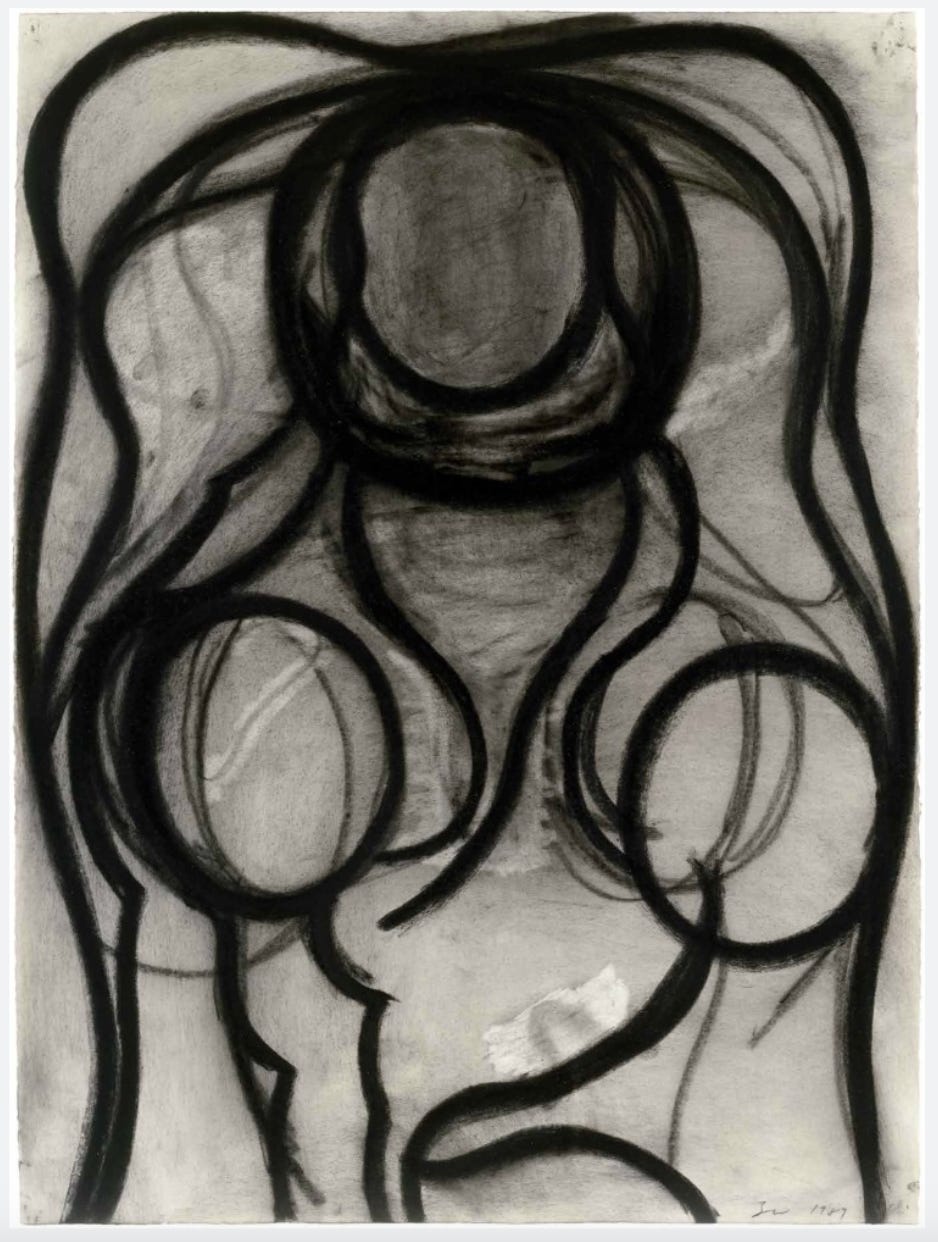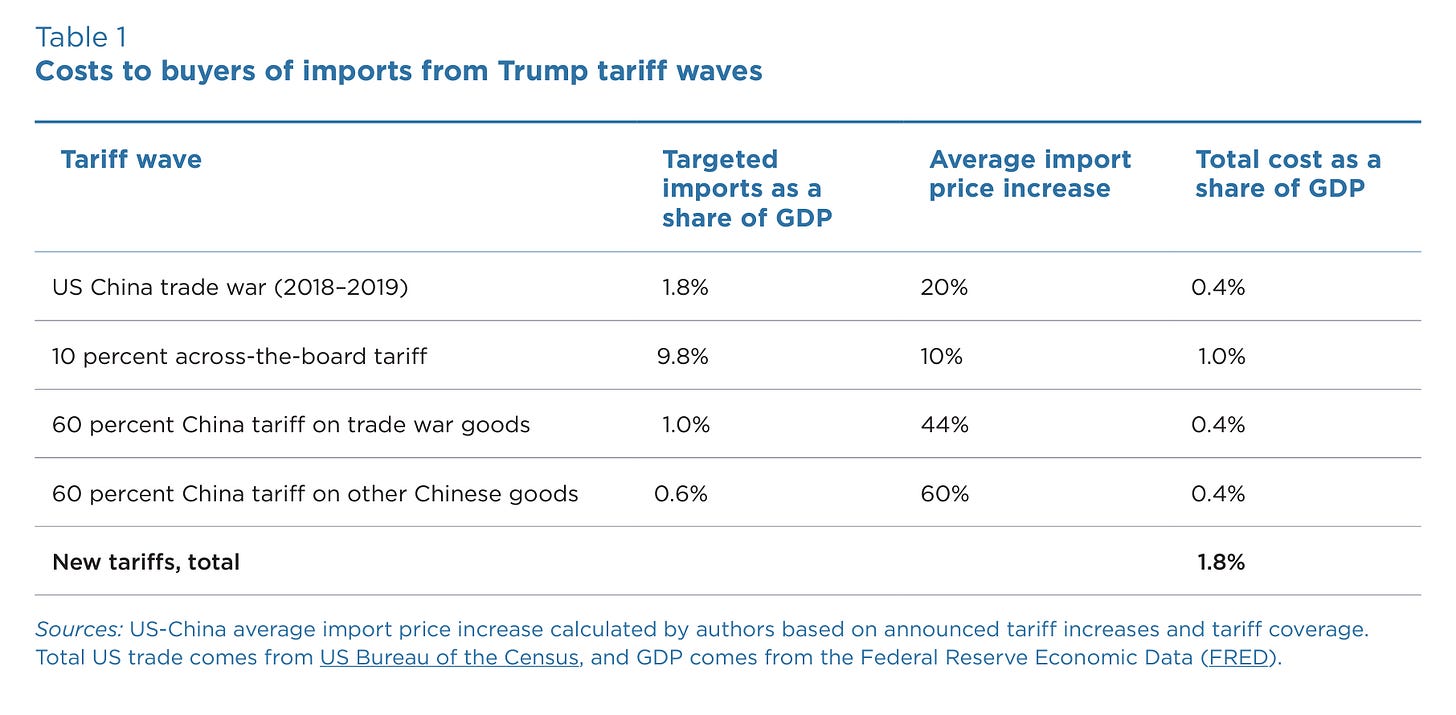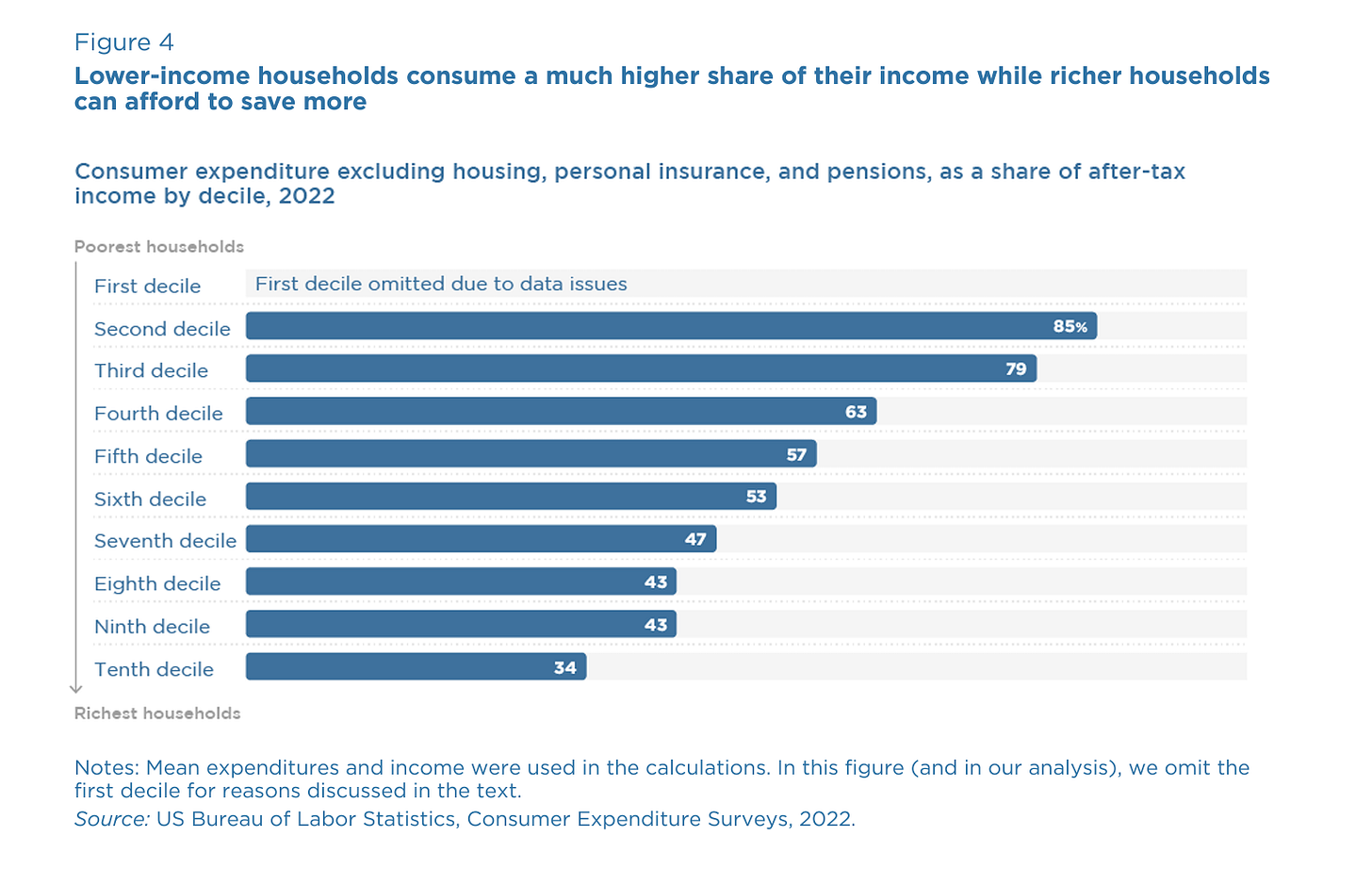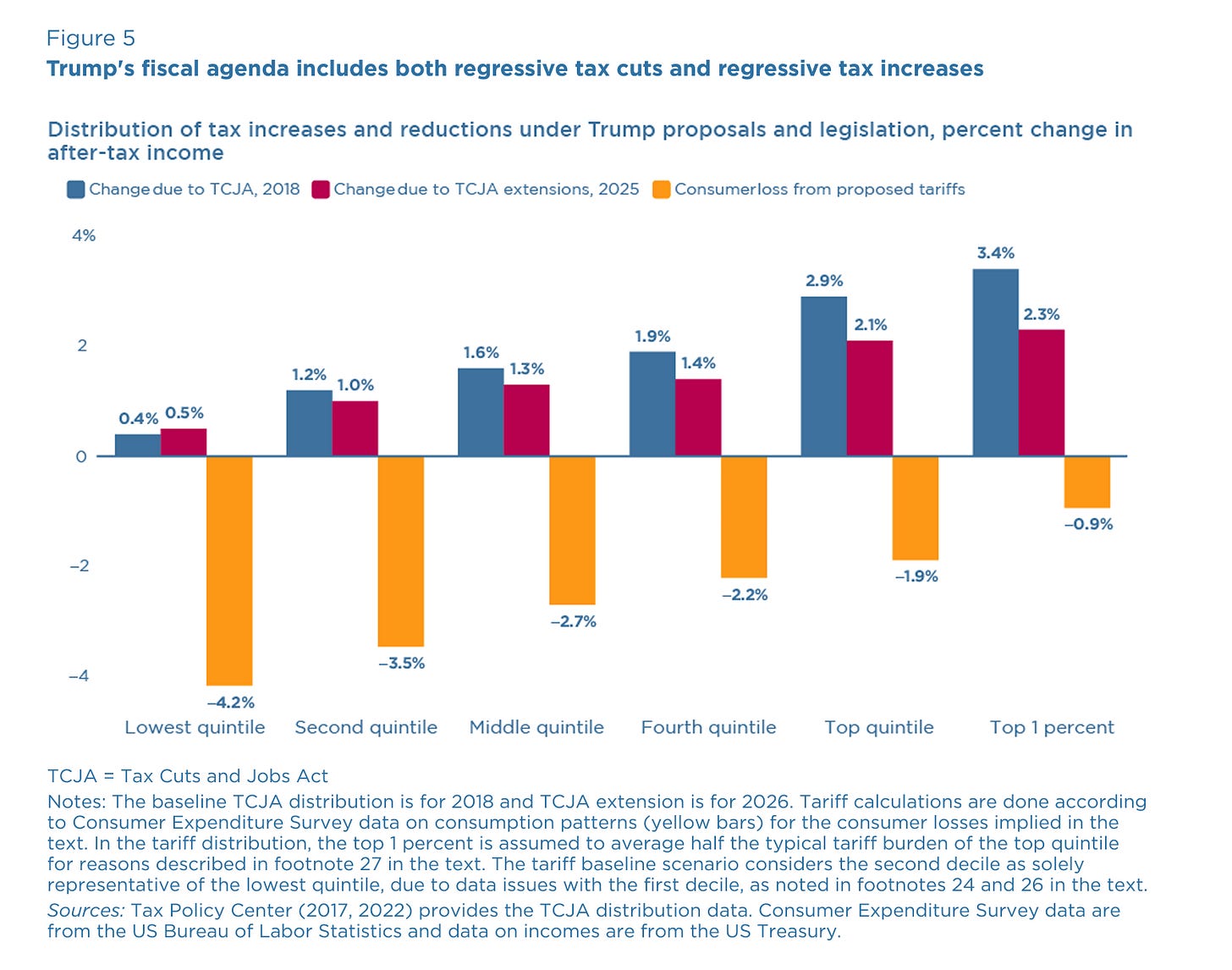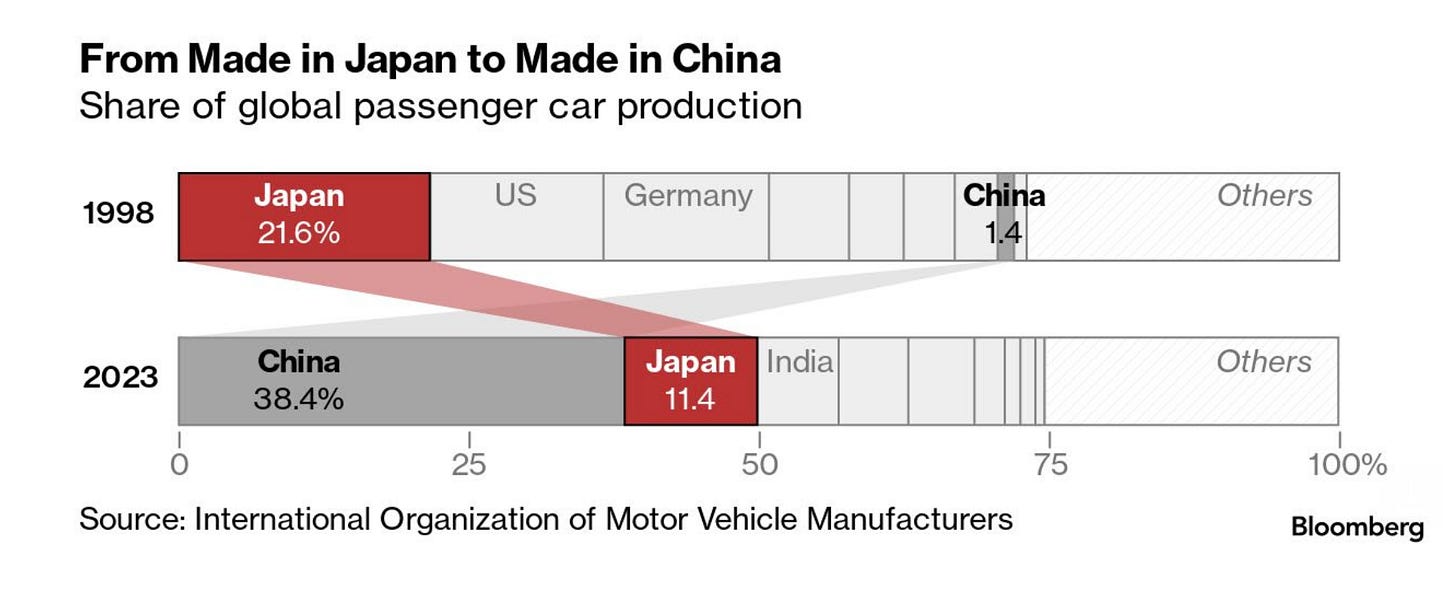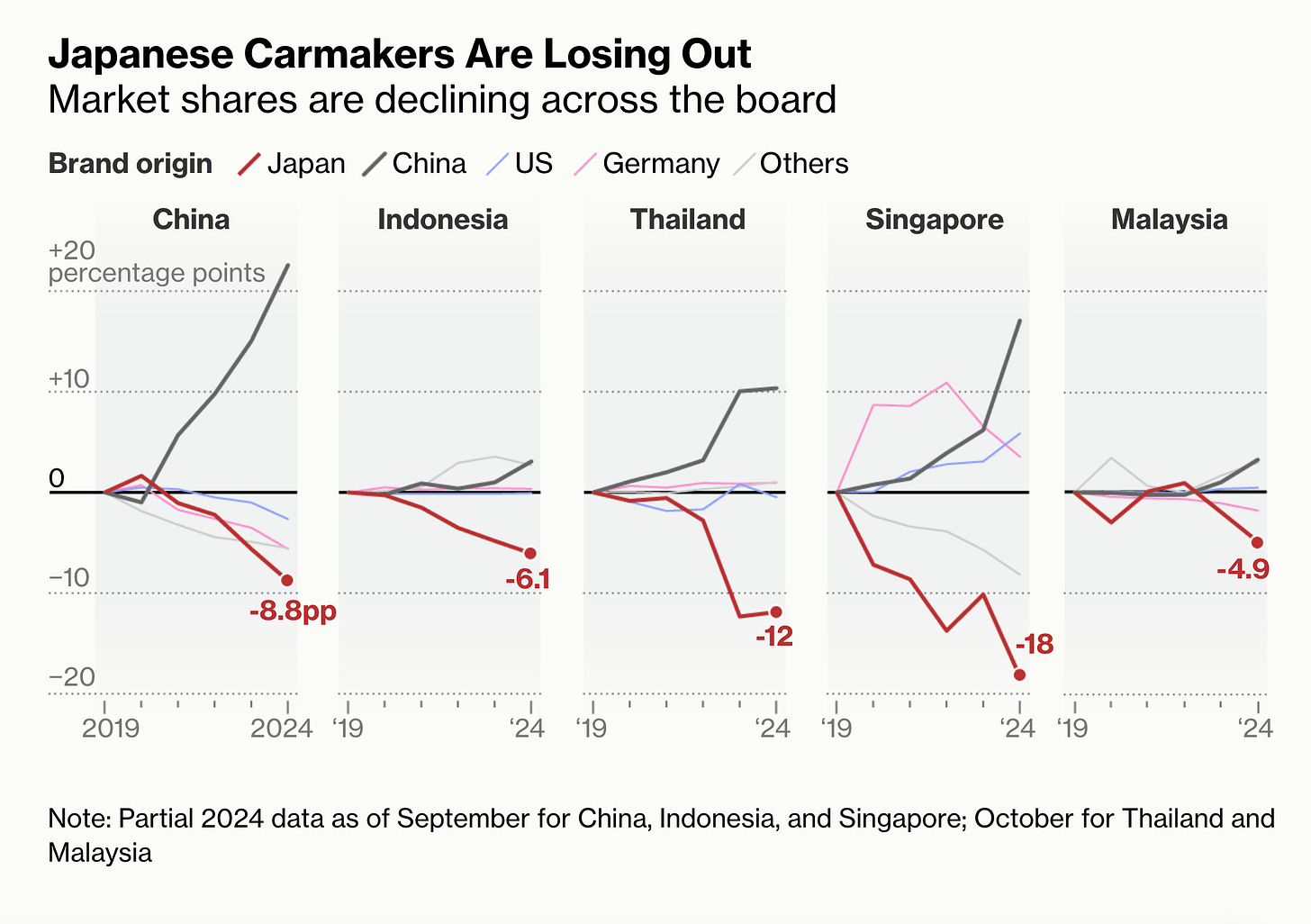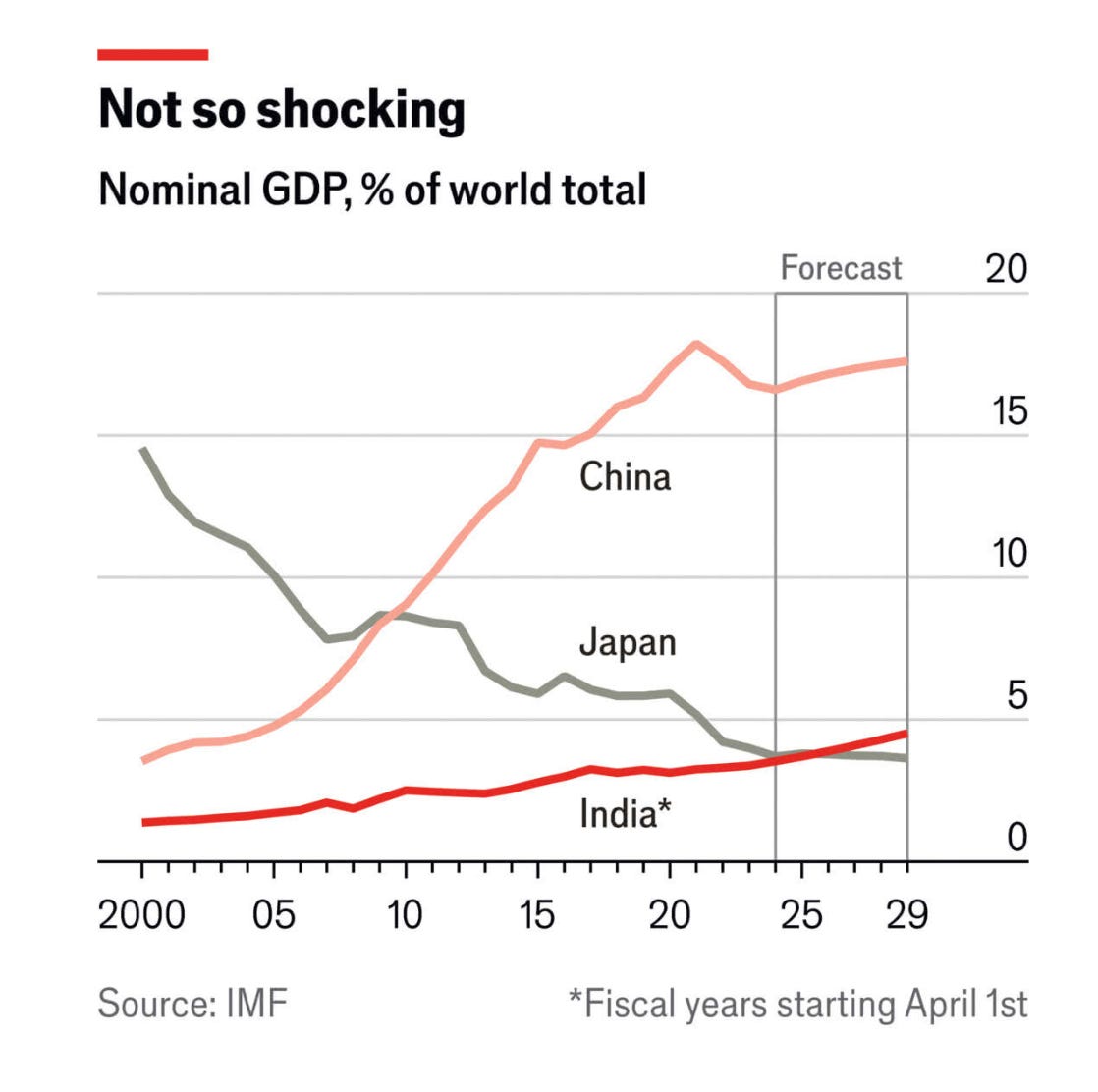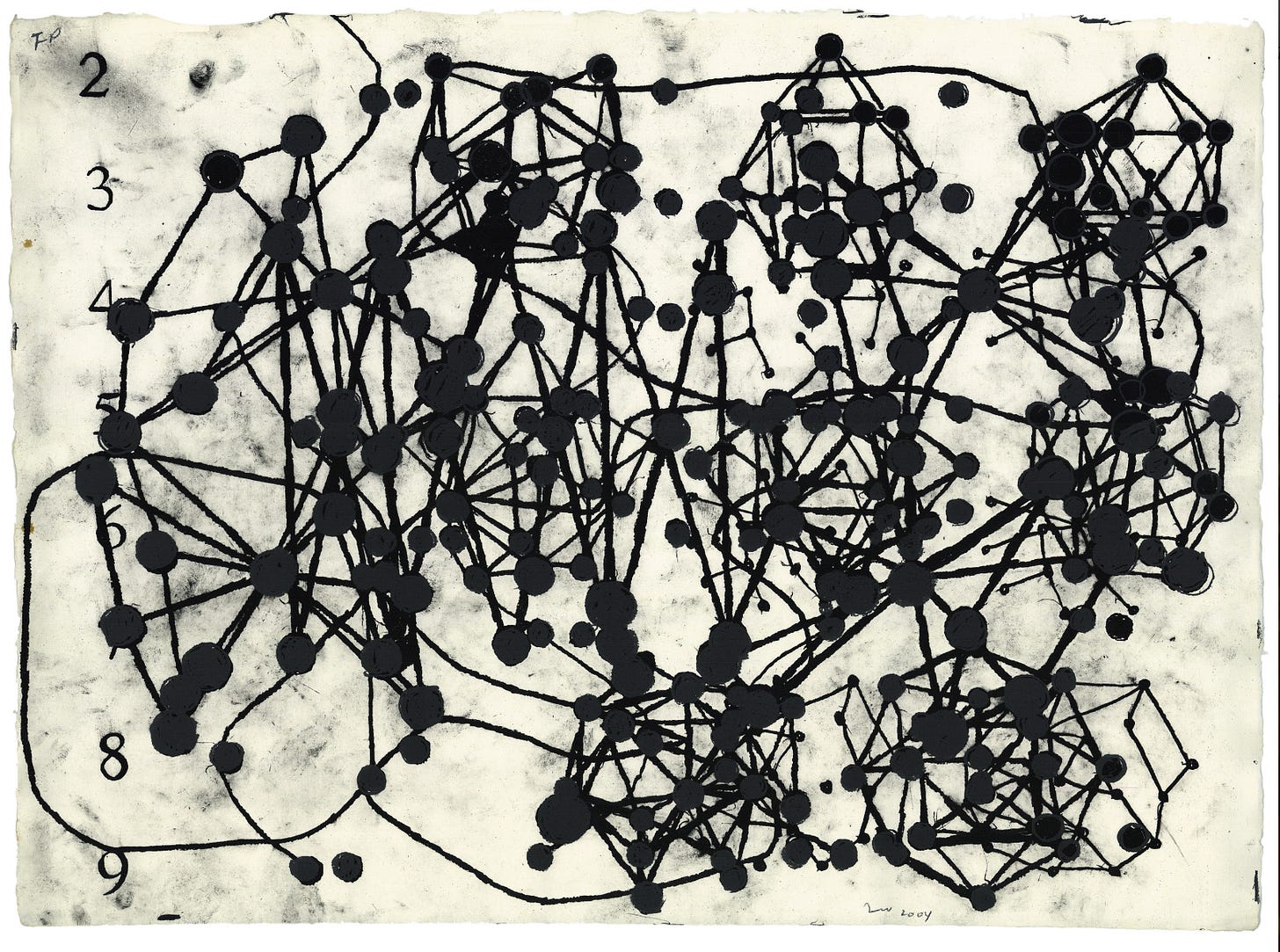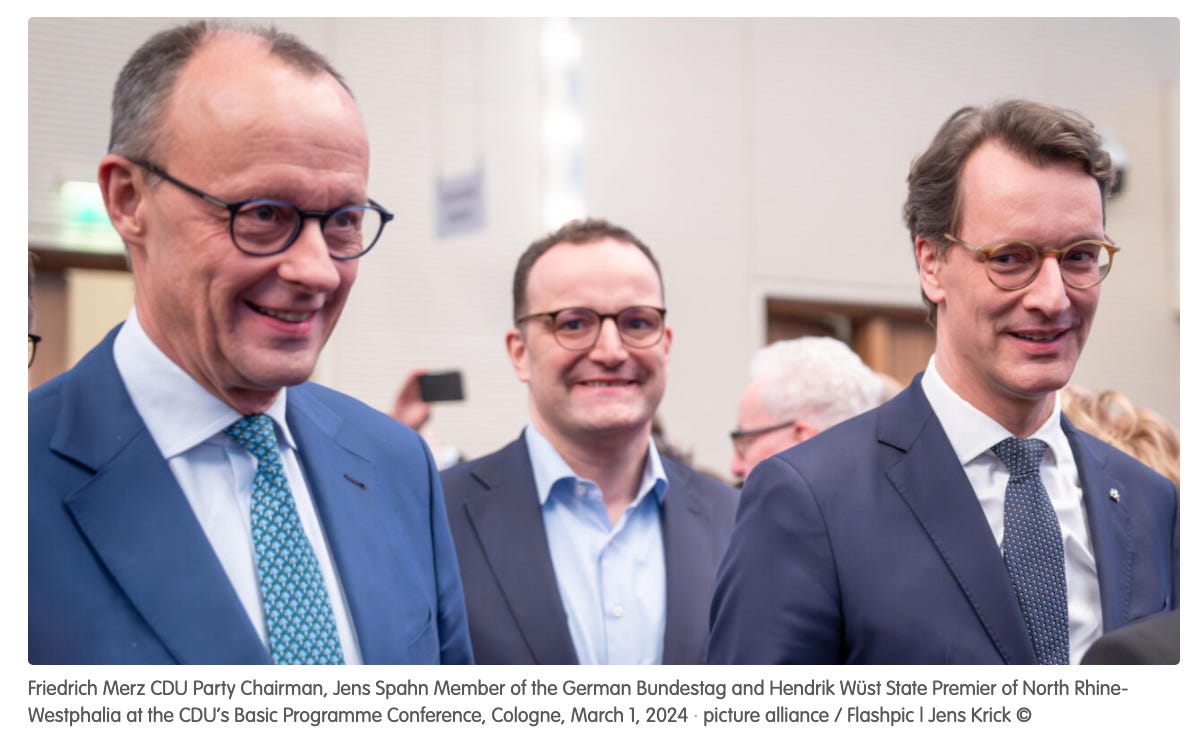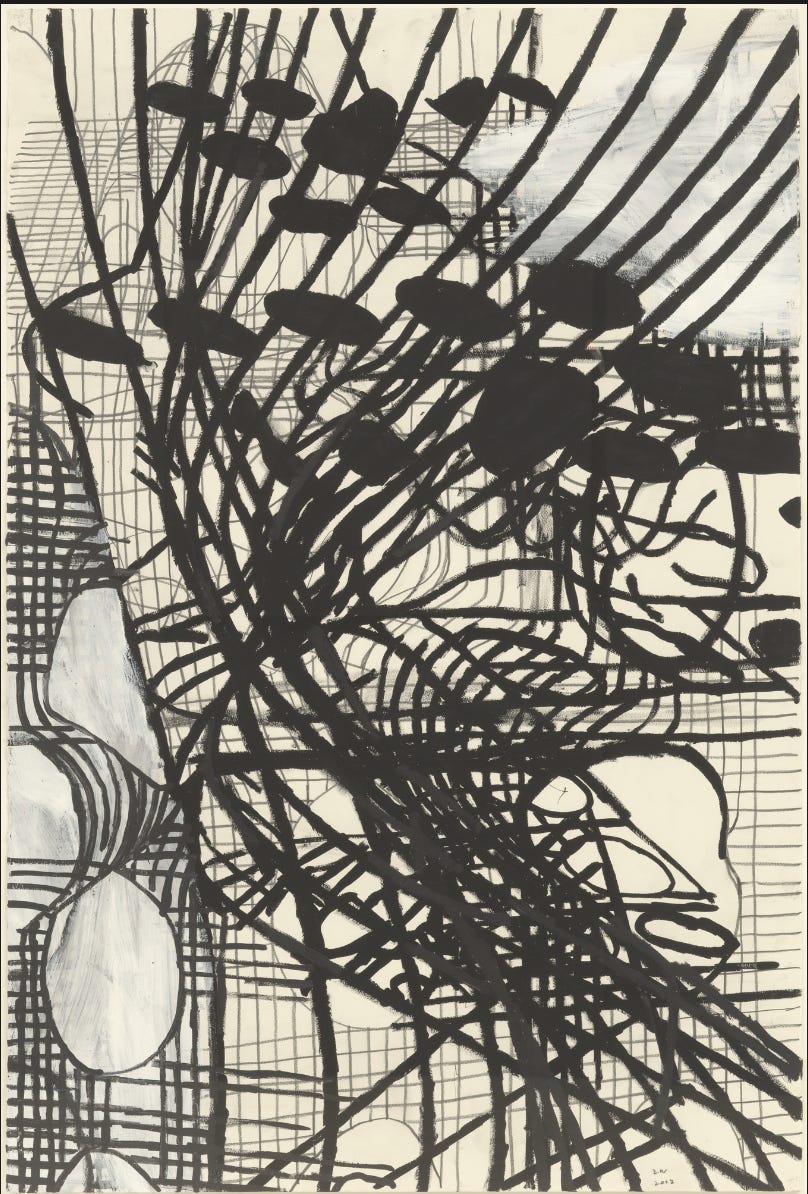Tariff arithmetic. The gearshift in global auto. Will India overtake Japan and Germany's likely lads.
Great links, images, and reading from Chartbook Newsletter by Adam Tooze
Thank you for opening your Chartbook email.
Terry Winters, Three, 1989. Source: The Modern Art Notes Podcast
Trump’s tariffs will hurt US consumers
They will hurt lower-income households most.
When used to fund tax-cuts for the rich, the combined effect is even more regressive.
Source: Simple truths from PIIE
HEY READERS,
THANK YOU for opening the Chartbook email. I hope it brightens your weekend.
I enjoy putting out the newsletter, but tbh what keeps this flow going is the generosity of those readers who clicked the subscription button.
If you are a regular reader of long-form Chartbook and Chartbook Top Links, or just enthusiastic about the project, why not think about joining that group? Chip in the equivalent of one cup of coffee per month and help to keep this flow of excellent content coming.
If you are persuaded to click, please consider the annual subscription of $50. It is both better value for you and a much better deal for me, as it involves only one credit card charge. Why feed the payments companies if we don’t have to!
And when you sign up, there are no more irritating “paywalls”
Dissent events in China climbed 27 percent in Q3 2024
For contributing subscribers only.
How the geography of global car production has shifted.
In third markets across Asia, Japanese losses are painful
Source: Bloomberg
The long retreat of the US auto industry (David Fickling in blistering form)
Germany’s Carl Benz might have invented the automobile, but it’s the United States that got us to drive them. The relentless export of American cars and car culture put the world on the road in the 20th century. By the 1960s, Ford Motor Co. had plants in almost every major European country, as well as Argentina, Brazil, Egypt, India, Israel, Peru, Pakistan, South Africa, Turkey, and Zimbabwe. Right now, it’s passing that baton to China with barely a fight. The US car industry that emerges will be smaller, less influential — and, eventually, less profitable and financially sustainable. The immediate question is over the fate of General Motors Co.’s Chinese units, mostly joint ventures with SAIC Motor Corp. That company, controlled by Shanghai’s city government, is best-known internationally for reviving the storied British MG brand with a range of affordable, export-oriented SUVs and hatchbacks. It’s no secret that these ventures are struggling. A decade ago, equity-accounted income from China made up more than half of GM’s net profit, but in the first nine months of this year they racked up a $347 million loss. “It’s a difficult market right now,” Chief Executive Officer Mary Barra told investors in July. “Very few people are making money.” Chevrolet sales have fallen off a cliff, and are likely to end the year barely scraping 10% of the level they were at in 2019. Cadillac isn’t doing much better. Even Buick — which in China has substantial brand cachet as the chosen marque of independence leader Sun Yat-Sen and Mao’s longtime premier Zhou Enlai — is barely keeping its head above water. Things are better with local brand Wuling, whose tiny electric vehicles cost about $8,000, but Baojun, GM’s other local JV model, also appears to be circling the drain. Barra has long reaffirmed her commitment to China, but the outlook has rarely looked bleaker. GM and SAIC are locked in meetings through the end of the year to restructure their holdings to make them profitable. … A middle path would be to follow Ford and Chrysler-owner Stellantis NV, and re-establish the business as one where the Chinese company manufactures cars, and the foreign partner exports them to lower-cost markets such as Southeast Asia and Latin America. SAIC, however, is already working hard building its own international distribution networks. It’s recently started sponsoring English soccer club Arsenal, as well as leading clubs in the French and Saudi Arabian soccer leagues, and an Australian rugby league team. Besides, turning GM into a glorified car dealership hardly looks like a route to sustainable profits. Either option, moreover, will mark another nail in the coffin of American soft power. When Detroit had its last brush with death in 2009, about two-thirds of GM and Ford’s combined sales were outside the US. With China sales dwindling, we’re approaching the point where two-thirds will be in the US, instead. The American car industry is turning inward again for the first time in a century. Detroit got the world on the road. BYD will inherit the earth.
Source: Bloomberg
Will India overtake Japan in 2025?
In 2025 it could overtake Japan to become the world’s fourth-largest economy. India’s population is already bigger than China’s and its economy is likely to grow significantly faster in the next few years. Manufacturers scared by Sino-American tension see it as a potential refuge. Yet its rise will be less spectacular than China’s—and less likely to provoke a backlash. India’s investment needs tend to exceed its own saving rates, so large net capital outflows are unlikely. And India’s workforce remains only three-quarters of the size of China’s, partly because it includes so few women. That will make it harder for India to become the world’s workshop.
Source: Economist
Terry Winters, “Bond”, 2004, Lithograph printed in two colors on unbleached Arnold paper, 22 ¼ in. 30 ¼ in.
Source: Colby Museum of Art
Power failure in the world’s coldest capital
In the past few weeks, the state-owned main electricity provider in Ulaanbaatar announced a series of potential interruptions, citing insufficient power supply. These disruptions – which came alongside an increase in set-tariff prices on electricity and heating – were not welcomed by average Mongolians as winter peaks in the coldest capital city in the world. In 2023, Mongolia produced 77.7 percent of its electricity domestically, mainly (90 percent) through coal-fired thermal power plants, and imported the remaining 22.3 percent of electricity from Russia. The Ulaanbaatar Electricity Distribution Network (UEDN) notified customers of a potential disruption anywhere from 60 to 120 minutes between 4 and 6 p.m. and urged people to limit unnecessary usage during the peak time. According to the UEDN website, the network serves half of the country’s population (1.7 million out of 3.4 million in 2023), including people in Ulaanbaatar and the surrounding area, with government-set tariffs. The electricity and heating tariff is heavily subsidized by the government at the cost of accumulating a considerable amount of debt. The price has stayed the same since 2019, according to the Statistics of Energy Report 2023.
Source: Diplomat
The likely lads: Why Merz’s new political generation will decide Germany’s future
In February 2025, Germany will hold a federal election—and polls indicate that the conservative Christian Democratic Union (CDU) and its Christian Social Union in Bavaria (CSU) allies are likely to triumph. The change will usher in a generational shift of decision-makers in Berlin, which could see the country turning away from its supranational outlook and instead leading new intergovernmental alliances comprising of north-eastern European state groups, such as Finland, the Netherlands, Poland, and Sweden. It could even stretch to non-European Union states like Norway and the United Kingdom. But this new approach does not so much stem from 69-year-old likely CDU chancellor Friedrich Merz as from the party’s leading figures. They are, by and large, much younger than Merz and view Germany’s role in Europe in a more self-assured way than previous generations of CDU politicians. Should Merz triumph, the new German government will have a mandate to pursue a foreign policy based on integration steps concerning defence spending and debt-sponsored innovation policies. Eventually, Germany will be less likely to aim for the broad supranational alliances it previously developed to ensure no state was left behind. Instead, a ‘two-speed Europe’ is likely—although it come at the cost of alienating Germany’s core EU partner, France.
Source: Timo Lochocki in European Council for Foreign Relation
Terry Winters. Boundary Layers / 2. 2002
If you’ve scrolled this far, you know you want to click:




